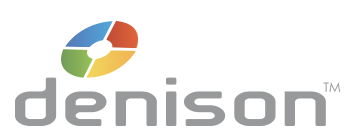
Deciding How to Decide
and Why it Matters (A lot) for Your Company’s Culture.
and Why it Matters (A lot) for Your Company’s Culture.
By Levi Nieminen, PhD, Director of Research & Senior Consultant
In this article, I describe the strong ties between decision making processes in organizations and people’s experience of the culture, pointing out a number of the common challenges. I then discuss how to introduce a common language around decision making and weave it deep into the fabric of organizations.
When you get down far enough into the “mud” of culture in organizations, one of the things that almost always winds up on the shovel is decision making. People aren’t involved in the decisions that impact them. Their input is not sought out, or when it is, it’s not really valued. They don’t know why certain decisions were made. And they never heard back from the decision makers afterwards… the list goes on.
When these behaviors are common enough, people slog along carrying high levels of frustration with them, and their organizations suffer too because decision making is neither as effective nor as efficient as it could be. When employees describe the culture, they point out how their bosses are overbearing micromanagers who have to make every decision, no matter how small, e.g., “We can’t get anything done without getting their approval.”
Vice versa, when managers describe the culture, they talk about employees whose desire for authority exceeds both their capabilities and their interest in the additional accountability that comes with it, e.g., “Things would grind to a halt if we had to ask for their opinion on every decision that comes across our desks.” You get the picture: low empowerment, low transparency, low trust.
It’s interesting to note, however, that in these same organizations, it’s also rare to find managers or employees who aren’t genuinely interested in reshaping these cultural dynamics and finding a healthy balance. Generally speaking, managers don’t like micromanaging, and employees aren’t seeking unfettered authority. It’s less that they lack a want for change and more that they get stalled out in the how. Their internal debate is entrenched in a fruitless comparison of two equally unattractive options: Micromanagement or unfettered authority? The distance between these poles looks like a huge leap of faith and an above-average chance to go splat if they do jump.

A language for decision making processes
When you dig deeper, one of the root causes you’ll find is that many organizations (perhaps most) do not engage in explicit discussions about how decisions are made –i.e., the decision process. Instead, they take steps ahead using a fuzzy set of assumptions about how things are likely to play out, each person carrying a unique view of the past and unique hopes for what will be different this time, much or all of it unstated to each other.
And it’s generally true, as it is here, that we don’t talk about the things for which we lack the language. On this point, what can be very helpful is to introduce a framework for talking about different ways to make a decision so that people can outline and consider some basic options. And if the framework is simple enough–and simplicity is beauty here–people can hold it in their minds and call on it in the moment. This allows the decision process to become an explicit point of discussion with a more rational and transparent basis for choosing.
The framework I describe in this article is not my original work. It’s an ‘oldie but a goodie’ that can be traced all the way back to Vroom and Yetton’s seminal research on decision making styles in the 1970s.[1] They described five main styles and laid out the criteria and corresponding questions that should lead to a rational choice of one over the other. Organizational psychologist, Bruce Gibb, introduced me to an adapted version of the Vroom and Yetton framework, where he added delegation as an additional decision style and revised some of the language. This is my further simplification of those frameworks, where I differentiate four basic decision processes:
- An authoritative process is when one person makes a decision with little input or assistance from others. If they do seek input it’s usually in the form of requesting bits of information from others while providing minimal context about the decision to be made. The process of weighing the facts and making the decision is approached almost entirely as a one-person-job.
- In a consultative process, one person retains ultimate decision authority but seeks others’ participation in getting to a decision. They share the full context and then invite others to take an active problem solving role. They might ask outright what others think should be done before ultimately making and communicating a decision.
- In a group process, one person facilitates a group of people to make the decision. The group weighs the facts, fully debates the pros and cons of each option, and seeks to build consensus through the dialogue. If no clear consensus emerges, the group may choose to vote on it or find a path forward via other means (e.g., ceding the decision to a subgroup, etc.).
- Finally, one person can delegate to another, who then moves the decision forward using an authoritative, consultative, or group process as described above. The person in a position to delegate might provide some guidance on how to proceed at the outset of the process and offer some ongoing counsel, however, without reclaiming the lead role in advancing the decision process.
[1] See Vroom and Yetton’s seminal article, “A New Look at Managerial Decision Making,” published in Organizational Dynamics, (Vol. 1, No. 4, 1973).
Right about now, you’re likely thinking a few things. One is about all the nuances and exceptions to these four, and of course, that’s true. But the point is that these are the basics, the building blocks by which many if not most decisions are fundamentally made. And if groups can learn these four and agree on what they basically look like, then they have a basis for asking the all-important question: How are we going to make this decision? And furthermore, decisions that start out as a consultative process can turn into a group process and have sub-decisions that are made on an authoritative basis, and so on. But at any given point, the people involved can pull out the building blocks and have a reference point to make sense of where they are and where they’ll go next.
A second thing you might be thinking is how this framework can possibly help steer some control from the hands of the micro-manager. Isn’t the problem that these people make authoritative decisions and conclude in their own minds that it’s working great? The key here is to not allow the thought process to stay inside minds but to bring it out into the open air. An authoritative decision that makes sense to several people looks really different and has a very different reception than an authoritative decision that makes sense only to one person. Dialogue is the difference. However, for it to be productive dialogue there needs to be a common logic or “mental model” within the group for deciding how to decide.
Deciding how to decide
In my opinion, Vroom and Yetton’s original work is too complex and unwieldy to be easily accessible and useful in the crucial “little moments” that determine whether things proceed this way or that way. In place of their original decision tree, I’ve substituted a set of heuristics that describe a rational basis for preferring one decision process over the others, or as Gibb says, “Deciding how to decide.”
Within these heuristics, four criteria are defined so that their relative importance can be weighed accordingly in each situation.
- Prefer an authoritative process when the person has all of the necessary information, it’s a routine decision, the group’s acceptance is either assured or relatively unimportant, and efficiency is paramount.
> Acceptance is the level of “buy-in” and support needed from those who will implement, follow, or abide by the decision.
> Efficiency is the speed at which the decision can be made.
- Prefer a consultative process when the person does not have all of the necessary information but knows how to approach the problem solving aspect, needs to build a certain level of group acceptance, and when quality is prioritized over efficiency.
> Quality is the importance assigned to making the best possible decision because the outcome will be highly consequential or highly visible.
- Prefer a group process when the person does not have all of the necessary information, does not know how best to approach the problem solving aspect and therein needs the brainpower of a group, and where that same group’s acceptance is paramount.
- Finally, prefer delegation when the person judges another as sufficiently capable to lead the decision process, is in a position to provide the necessary level of guidance and support, and when development can take priority.
> Development is the degree to which leading the process is a valuable growth opportunity.
In general terms, when you follow these heuristics, they prime an important thought process about what matters most (i.e., the “criteria”), and therefore, what process makes the most sense in the situation. Is it – Making a quick decision? Getting it right? Bringing others along? Or creating a development opportunity? The answer is situational.
You’ll also note that applying this framework helps to address the “who question” but does so by walking backward from an analysis of the situation and criteria. When groups enter the dialogue focused on who gets to make the decision, it has a way of priming unhelpful notions of turf and positional power. In contrast, focusing the dialogue on how the decision should be made has a way of opening up the right questions at the right time about roles, expertise, access to information, key influencers, and so on. In other words, clarifying process usually helps to sort out questions about who best to involve and how.
Creating the space for dialogue
Learning the framework is one thing and practicing it is something entirely different. An important aspect of getting it into daily practice is creating the space for routine dialogue. In my experience, the best way to learn the framework is to use it to analyze some specific decision examples from the past. The facilitator might ask the group: Describe a decision that wasn’t as effective as you would like, either because there was confusion, it was too slow, people didn’t support it, etc. What process was used and what process might have worked better?
It’s not uncommon in these discussions to unearth divergent descriptions of what happened and why, even down to some of the very basics. The boss thought he had delegated it. The group thought it was going to be a democratic process. Two executives each thought the other ultimately had made the decision. In each case, a better word for thought would be assumed. But making fun of the past isn’t the point. The key insights from these past examples should lead the group directly into a productive planning discussion about how future decisions will be made more effectively.

Giving people a set of questions they can use as prompts for productive dialogue is a second exercise that can help a lot. Well, not quite “giving” them. The group needs to articulate–for themselves–the questions they feel would improve decision making and then commit to using them in daily practice. Again, simple is good, and the closer in number to 7±2, the more likely people can hold them in their minds and call on them in the moment.
Here are some examples of good questions that can add depth to the thought process and dialogue about decisions:
- Have the right people been consulted and/or involved?
- On what data is the decision being made?
- At what level of the organization should the decision be made?
- Is there a policy or guidelines to reference? If not, will this decision create one?
- Does the decision reflect and reinforce our values as an organization?
- Have we closed the loop by communicating the ‘how-what-why’ after a decision was made?
- How will we measure the impact of the decision over time?
Whether people perceive that it is safe (or not) to use the questions is everything, and has a lot to do with how leaders behave. Key signals from leadership that others will look for include (i) whether leaders demonstrate humility and ask others to challenge their assumptions and thinking and (ii) how leaders respond to the first few “challenges” that come their way.
Embedding the new behaviors
One yardstick for judging the success of a program architected on these principles is the extent to which new habits and routines emerge in place of the old ones. And killing the old ones dead won’t be easy. And so in closing, I’ll leave you with a few reflections about how to translate program learning into habits that embed deep and stick around.
Use a campaign of reminders. Keeping the program learnings and commitments top-of-mind for people is a big first hurdle. Artifacts such as posters, business cards, or decision making “playbooks” can help, particularly if they provide a quick reference to the stickiest parts of the program, such as “the questions.”
Meetings are another place for new routines and reminders. Meetings can start with a quick clarifier on what decisions will be made or discussed and how; they can be wrapped up by asking: Are we clear on what was decided – or – What next steps are needed for us to move to a decision?
Stay on top of the bad old habits. It can help a lot when groups talk about their biggest “watch-outs” and how they will raise awareness to the early signals that, “folks, we’re doing it again.” This is also where having a parallel track that supports individual awareness and growth is extremely important. In truth, this topic is deserving of its own blown-up article, and there are some really interesting ways to integrate things like personality assessment, feedback, and one-on-one coaching. But for now, let’s all agree (and then move on) that all the best programs can succumb to the re-emergence of the bad old habits, particularly when they re-emerge from the key influencers in the group.
Scaling the program from top to bottom. The long-term success of any one team, department, or division to shift its decision making behavior will be capped to a certain extent by whether the organization as a whole can make a similar shift over time, starting most immediately where there are strong interdependencies. This is most salient up and down the hierarchy, where executives need to role model the new behaviors and engage their direct reports in a process of “cascading” the key program elements down to their direct reports, and their direct reports, and so on. The key role for program facilitators here is to support this process and get everyone in the organization speaking the new language.
Levi Nieminen, PhD is the Director of Research and a Senior Consultant with Denison Consulting
Connect with Insights from Denison
If you’d like to be kept up to date when we release a new TRANSFORM article or important piece of research, we can notify you so you have immediate access. Yes, please let me know.


